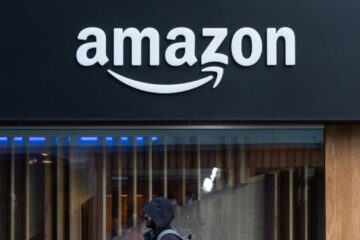These days, it doesn’t matter whether you talk to a retailer or a customer.
If you ask them what their biggest challenge is, it’s finding a good deal.
Related: Walmart store section closing indefinitely after scary incident
That’s because supply-chain issues lingering from Covid, persistently high inflation, and now, tariffs, are putting pressure on the price of many household goods.
Try stopping in at your local grocery or convenience store and taking a look around.
Better yet, try testing your memory by recalling what you paid for a gallon of gasoline or milk prior to 2020.
Even if you can’t remember, you probably know it was cheaper than it is now.
Here’s a list of the average price of a few mainstay items in 2019, before Covid hit:
Gallon of milk: $3.04Gallon of gas: $2.62One dozen eggs: $1.54
Nowadays, those prices look far different. Here’s what they run, on average, in 2025:
Gallon of milk: $4.05 Gallon of gas: $3.22
One dozen eggs: $4.90
Walmart is expanding its convenience store presence across the U.S.
Image source: Jeff Greenberg/Getty
Retailers respond to changing prices
Not all retailers are created equal, however.
Some of them have quite enjoyed the price of nearly everything going up.
In fact, some corporations have kept their prices artificially high — even after things began to normalize — in an effort to keep profits high and investors happy.
More Walmart:
Walmart, Kohl’s raise alarm bells about a growing threatSam’s Club making big new Costco-style membership changeWalmart’s Sam’s Club drops self-checkout, adds new anti-theft techSam’s Club making major change to rival Costco
“Some firms seem to have used rising costs as an opportunity to further hike prices to increase their profits, and profits remain elevated even as supply-chain pressures have eased,” the FTC found in 2023.
Companies like General Mills, Kroger, and Tyson Foods saw outsized profits following the pandemic.
And while there’s certainly a temptation to keep prices elevated to please investors, not every retailer has taken that path.
Walmart makes a big bet on prices and convenience
Despite Walmart’s (WMT) great successes during and after Covid, the largest retailer in the U.S. has been focusing on devoting its resources elsewhere to please customers.
One such change has been a price rollback to pre-inflation levels in 2024. Walmart saw an outsized influx of new customers thanks in part to that effort.
Also, in the background, Walmart has been quietly building up a whole new store fleet around the country.
The super-retailer is steadily setting up convenience stores across the U.S.; in the first year, it established about 100 stores. Now it has a presence that spans 34 states.
Related: Walmart’s Sam’s Club gets something new Costco doesn’t have
Now, it plans to scale that number up to about 450 locations by the end of 2025.
And some of its services are set up to fold right into the new plan. Walmart+ offers $0.10 off every gallon of gas at Walmart convenience centers.
On average, Walmart’s gas is about $0.19 cheaper than the average gallon in the country.
Its convenience stores will mostly be clustered in parking lots near traditional Walmarts. They’ll sell things like gas, snacks, and other quick essentials that allow customers to get back on the road.
The planned expansion is set to make Walmart one of the top 20 convenience store chains in the U.S.


